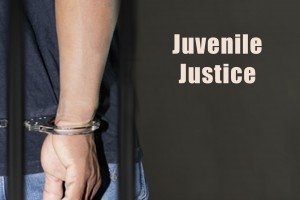The Juvenile Justice (Care and Protection of Children) Act, 2015 received the assent of the President on 31st December, 2015 and was enacted to consolidate and amend the law relating to children alleged and found to be in conflict with law and children in need of care and protection by catering to their basic needs through proper care, protection, development, treatment, social re-integration, by adopting a child-friendly approach in the adjudication and disposal of matters in the best interest of children and for their rehabilitation through processes provided, and institutions and bodies established here under. Also in view of re-enacting the Juvenile Justice (Care and Protection of Children) Act, 2000, it was expedient to make comprehensive provisions for children alleged and found to be in conflict with law and children in need of care and protection, taking into consideration the standards prescribed in the Convention on the Rights of the Child, the United Nations Standard Minimum Rules for the Administration of Juvenile Justice, 1985 (the Beijing Rules), the United Nations Rules for the Protection of Juveniles Deprived of their Liberty (1990), the Hague Convention on Protection of Children and Co-operation in Respect of Inter country Adoption (1993), and other related international instruments.
The Act consists of 112 sections in 10 chapters, which particularly entail provisions with respect to the following:
- Section 2 enumerates definitions for sixty-one relevant terms including “juvenile”, “child in need of care and protection”, “abandoned child”, etc.
- Section 3 lists sixteen general principles for care and protection of children like Principle of presumption of innocence, Principle of dignity and worth, Principle of participation, etc.
- Chapter 3 provides for the constitution of Juvenile Justice Boards in every district for exercising the powers and discharging its functions relating to children in conflict with law under this Act. It also provides for preliminary enquiry with regard to the mental and physical capacity of a child to commit such offence to be conducted by the board in respect of heinous offences committed by him.
- Section 19 provides that where a child has committed an heinous offence and there is a need to try him as an adult, the children’s court may do so considering the special needs of the child, the tenets of fair trial and maintaining a child friendly atmosphere. The Children’s Court shall ensure that the child who is found to be in conflict with law is sent to a place of safety till he attains the age of twenty-one years and thereafter, the person shall be transferred to a jail.
- Section 20 provides that a child who has attained the age of twenty-one years and is yet to complete prescribed term of stay in place of safety may, on direction of the Children’s Court, be released for the remainder of the prescribed term of stay or shall complete the remainder of his term in a jail.
- Section 21 provides that no child in conflict with law shall be sentenced to death or for life imprisonment.
- Section 23 provides that there shall be No joint proceedings of child in conflict with law and person not a child.
- Chapter 5 of the act provides for constitution of a Child Welfare Committee for exercising the powers and to discharge the duties conferred on such Committees in relation to children in need of care and protection under this Act and ensure that induction training and sensitisation of all members of the committee is provided within two months from the date of notification.
- Sections 43 and 44 provide for the constitution of open shelters and foster homes respectively by the State Government for case and protection of the child.
- Section 47 of the act enables the State Government to establish such observation homes in every district as it deems fit for temporary reception, care and rehabilitation of any child alleged to be in conflict with law, during the pendency of any inquiry under this Act.
- Section 48 of the act enables the State Government to establish such safety homes in every district as deems fit for rehabilitation of those children in conflict with law who are found to have committed an offence and who are placed there by an order of the Juvenile Justice Board.
- Chapter 8 of the act deals with provisions with respect to Eligibility of adoptive parents and the procedure for adoption.
- Section 74 prohibits the disclosure of identity of children with respect to their name, address, school or any other particular in newspapers or any other media.
- Section 76 provides punishment for a period of 5 years to any person who employs a child for begging.
- Penalties for cruelty against a child, offering a narcotic substance to a child, and abduction or selling a child have been prescribed.

